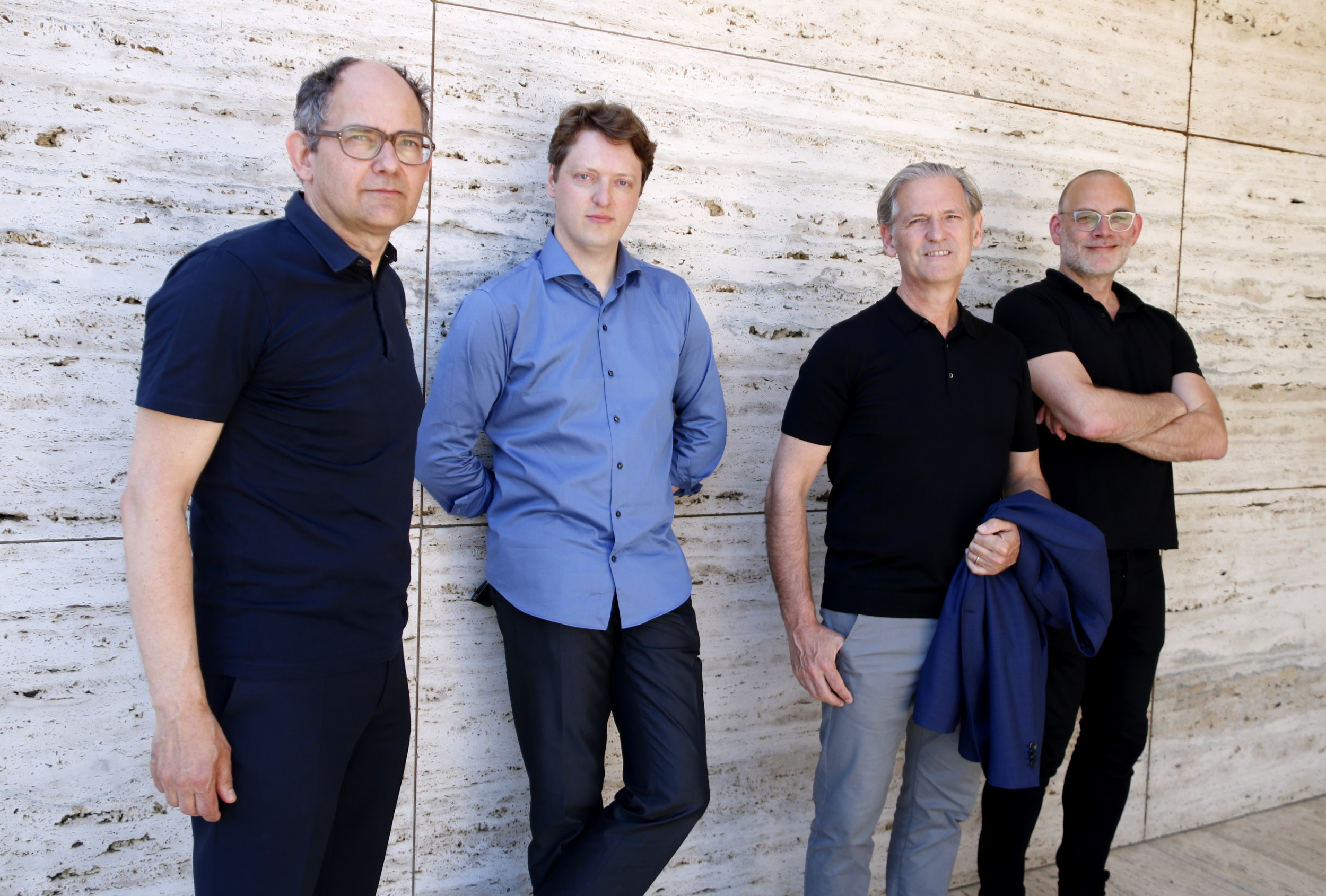The 2017 EU Mies Award winners praise Barcelona's “incredible richness” in architecture
The Dutch architecture studios NL architects and XVW architectuur, received the EU Mies Award 2017 (Contemporary Architecture prize of the European Union – Mies van der Rohe) on Friday in Barcelona for the rehabilitation of a big apartment building in Amsterdam. According to the jury, this year’s edition communicates two important messages: First, modern architecture has to fulfill citizens’ needs, and second, citizens participation in urban projects is essential for solving urban challenges. In an interview with the CNA, representatives from both of the prizewinning studios, Kamiel Klaassen (NL) and Xander Vermeulen Windsant (XVW), commented about the “incredible richness and variety” of Barcelona’s architecture and praised the potential of the city’s structure for future urban development.

Barcelona (ACN).- The Dutch architecture studios NL architects and XVW architectuur, received the EU Mies Award 2017 (Contemporary Architecture prize of the European Union – Mies van der Rohe) on Friday in Barcelona for the rehabilitation of a big apartment building in Amsterdam. According to the jury, this year’s edition communicates two important messages: First, modern architecture has to fulfill citizens’ needs, and second, citizens participation in urban projects is essential for solving urban challenges. In an interview with the CNA, representatives from both of the prizewinning studios, Kamiel Klaassen (NL) and Xander Vermeulen Windsant (XVW), commented about the “incredible richness and variety” of Barcelona’s architecture and praised the potential of the city’s structure for future urban development.
The European Union and the Mies van der Rohe Foundation chose a social housing project designed by two Dutch architecture studios as the recipient for the Contemporary Architecture 2017 – Mies van der Rohe prize. The award ceremony took place on Friday in Barcelona within the framework of Barcelona Architecture Week (from May 20 to May 26). In an interview with the CNA, the two representatives of the awarded studios, Kamiel Klaassen from NL Architects and Xander Vermeulen Windsant from XVW architectuur, praised the “incredible richness and variety” of Barcelona’s architecture “within a clear urban framework”. Klaassen also pointed out that “even ordinary, every day architecture” in Barcelona was “very sophisticated”. Windsant said that the Catalan capital has a good “basic layout” and that the development in Barcelona to give more space to pedestrian and cyclists was a very “positive step, which generates a structure for new projects to emerge.”
In terms of the prize-winning project, the two Dutch architecture studios carried out an “innovative” renewal of one of the biggest apartment buildings in Amsterdam, known as DeFlat Kleiburg, with 500 apartments. The property was saved from demolition and reconverted into a ‘Klusflat’, a type of building in which the tenants refurbish the apartments themselves. As Kamiel Klaassen explained in his interview with the CNA, their role as architects in the project “was relatively modest” and he highlighted “the collective effort” that allowed the “rescue” of the “immense housing block”. “The prize does not go to the architect, but to the building,” he said with humility. He also stressed that leaving the architectural decisions about the interior of the apartments to the future owners allowed for “more richness and more individuality”. Along the same line, Windsant pointed out that this year’s award marks a new development in the European perception of urban architecture. “The “star-architect” is a thing of the past. Architects have to get more involved in the processes in the cities” and to do so they have to assume “a more modest and more activist position,” he concluded.
The Mies van der Rohe Foundation’s Emergent Architect award 2017 also went to a housing project. The winner is MSA/V+ studio in Brussels, awarded for their NAVE project which contains five living units for social housing in the North of the Belgian city.
Both prize-winning projects illustrate the “social turn” that the European award made this edition, as the new president of the jury, Stephen Bates, explained. As Bates described during a press conference at the Mies Van der Rohe pavilion, he had asked the members of the jury “if we could award a housing-related project because it seemed very strange that a housing project had never won the Mies van der Rohe award.” Bates also explained that they searched for a building project that had an “associated narrative”, which “not only involves conventional elements of architecture like materials and shapes but also reflects life and the stories of the interior”. According to the jury, therefore, this year’s edition “sends two important messages”: modern architecture has to fulfill citizens’ needs, and citizens’ participation in urban projects is essential for solving urban challenges.
The prize-winning architects and the four finalists of this year’s edition are visiting Barcelona during the Week of Architecture (May 20 – 26), organized by the Barcelona city government and the Mies van der Rohe Foundation among others. According to the organizers it is “a pioneering experience to promote the identification of citizens with the buildings of their city and their participation”. The interactive program includes exhibitions, talks and debates as well as a program for families. The Palau Victòria Eugènia (Pavilion 7 of Fira Montjuïc) will host an exposition of all the projects presented for the 2017 EU Mies von der Rohe Awards, with scale models, photos, texts, and videos. Later on, the exhibition will travel through Europe and other countries in the world.